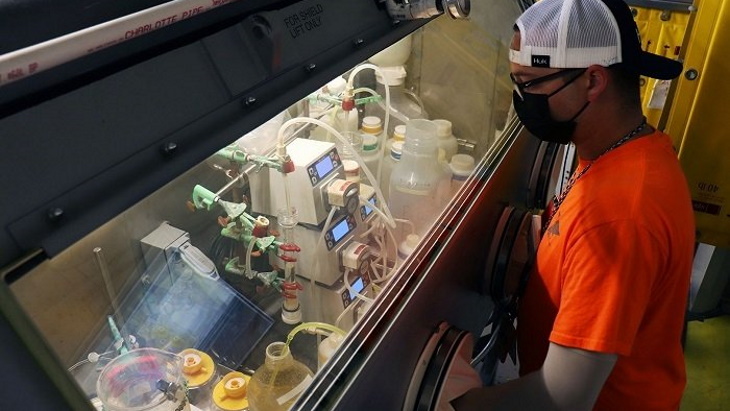A two-year effort by Oak Ridge Office of Environmental Management (EM) and contractor Isotek to process and dispose of a low-dose inventory of uranium-233 stored at the US Department of Energy's Oak Ridge National Laboratory (ORNL) in Tennessee has been completed. As well as eliminating legacy nuclear material the effort has also provided nuclear isotopes for next-generation cancer treatment research.

An Isotek employee processing U-233 inside a glovebox at ORNL (Image: DOE EM)
The U-233 - a manmade isotope - was created in the 1950s as an alternative fuel source for nuclear reactors, but was found not to be viable. The US inventory of the isotope was later sent to ORNL for long-term storage. Processing and removing the low-dose portion of the U-233 inventory is one of highest priority projects at the site, EM ORNL Portfolio Federal Project Director Nathan Felosi said. "It is vital that we continue driving this project forward so EM can reduce significant risks and security costs, and enable deactivation of the oldest operating nuclear facility in the world."
Work to dispose about half of the U-233 inventory was completed in 2017. The remaining material required processing and downblending in order to convert it into a form for safe shipment and disposal, but the heavily shielded "hot cells" in which to carry out the work were not immediately available.
Isotek identified a subset of the material with lower radioactivity levels that employees could begin processing in gloveboxes pending the availability of hot cells to address the U-233 material with higher radioactivity levels, and, through a partnership with private nuclear innovation company TerraPower, extracted thorium isotopes from the U-233 for TerraPower to use in cancer treatment research. The extraction of the thorium was funded by TerraPower.
The exercise, known as the Thorium Express Project, has been "extraordinarily important" to the overall U-233 disposition project, Isotek President Jim Bolon said.
With upgrades and installation of new equipment now complete, the next phase of the disposition campaign - processing canisters with the high-dose U-233 material - is set to begin early next year. This next phase will enable Isotek to enhance productivity by processing larger amounts of U-233 and extracting more medical isotopes, EM said.
Researched and written by World Nuclear News